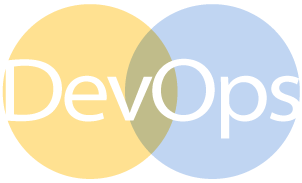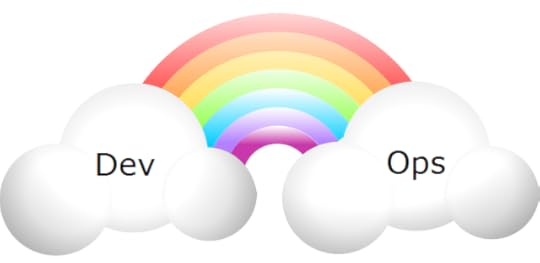Pearl Zhu's Blog, page 1440
April 24, 2015
A Motivational Mind
Focus provides motivation, and demolishes negative emotion.
 Motivation is the force to guide our behaviors. (about.com) Motivation makes a difference to everything we do. It infuses a different kind of energy which opens up our mind to possibilities that were not apparent before. More specifically, what's inside a motivational mind?
Motivation is the force to guide our behaviors. (about.com) Motivation makes a difference to everything we do. It infuses a different kind of energy which opens up our mind to possibilities that were not apparent before. More specifically, what's inside a motivational mind?
Motivation vs. Inspiration: Motivation is to drive action; inspiration is to provoke deep thinking first; motivation may take incentive; while inspiration takes vision; motivation is to push ahead, while inspiration is to pull up; motivation is to compete to win; while inspiration is to reflect who you are, compete for uniqueness. True motivation always has to come from within. It works more as inspiration. When we are inspired, we perform at our best. Where we stand, what we want to do, where do we want to reach, how much we can develop the ability to stretch our capabilities, are we ready to face any consequence to achieve what we want to achieve. So we need to handle life, not just livelihood.
You need to de-condition the mind. All motivation is a form of consciousness. It gives you the energy to do everything that you must do. But love and fear conditions your desires like they condition all other aspects of your cognition. If a desire is experienced in a fear context that desire becomes destructive. If it is experienced with a positive and love context, the same desire that was so destructive when driven by a mentality of fear now is completely benign, productive, creative, industrious, etc. Your conditioned mind lacks courage. And courage cannot be Infused. It is a lifelong process and practice for those who are ready to take charge of their life. For those who lack this courage, we need to ENCOURAGE, and to encourage we need to motivate them. And to motivate them we need to condition their mind, that they can do it. And to what extent, conditioning of mind is possible. Sometimes people are unaware of their potential, in such cases they need to be coaxed to exhibit their full potential. Motivation acts as a catalyzer in such cases. So the efforts to motivate people need to be done regularly on a sustainable basis.
 Focus provides motivation, and demolishes negative emotion. Motivation is perhaps a combination of several emotions. Maybe you have to make certain what it is you are going after in that motivation. Motivation is the "cognitive momentum" that comes from consistently applying the habits congruent with achievement of the goal. Ultimately the answer lies in focus. People who really have focus are selfless; they are beyond the short term reward, award or any recognition, and more focus on long term success and reward. They have Joy of Doing, or do something bigger than themselves. People who reach this height pass through immense pressures and hardships, just to achieve what they want to achieve. It is the inspiration to make a difference, passion of achievement, and freedom of creation.
Focus provides motivation, and demolishes negative emotion. Motivation is perhaps a combination of several emotions. Maybe you have to make certain what it is you are going after in that motivation. Motivation is the "cognitive momentum" that comes from consistently applying the habits congruent with achievement of the goal. Ultimately the answer lies in focus. People who really have focus are selfless; they are beyond the short term reward, award or any recognition, and more focus on long term success and reward. They have Joy of Doing, or do something bigger than themselves. People who reach this height pass through immense pressures and hardships, just to achieve what they want to achieve. It is the inspiration to make a difference, passion of achievement, and freedom of creation.
It is zeal and inspiration that energizes. The only one who can truly motivate you is you. You have to have desire and be willing to challenge yourself to be all you can be. A strong leader can inspire you and leads to motivation to take action or change.
Follow us at: @Pearl_Zhu
 Motivation is the force to guide our behaviors. (about.com) Motivation makes a difference to everything we do. It infuses a different kind of energy which opens up our mind to possibilities that were not apparent before. More specifically, what's inside a motivational mind?
Motivation is the force to guide our behaviors. (about.com) Motivation makes a difference to everything we do. It infuses a different kind of energy which opens up our mind to possibilities that were not apparent before. More specifically, what's inside a motivational mind?
Motivation vs. Inspiration: Motivation is to drive action; inspiration is to provoke deep thinking first; motivation may take incentive; while inspiration takes vision; motivation is to push ahead, while inspiration is to pull up; motivation is to compete to win; while inspiration is to reflect who you are, compete for uniqueness. True motivation always has to come from within. It works more as inspiration. When we are inspired, we perform at our best. Where we stand, what we want to do, where do we want to reach, how much we can develop the ability to stretch our capabilities, are we ready to face any consequence to achieve what we want to achieve. So we need to handle life, not just livelihood.
You need to de-condition the mind. All motivation is a form of consciousness. It gives you the energy to do everything that you must do. But love and fear conditions your desires like they condition all other aspects of your cognition. If a desire is experienced in a fear context that desire becomes destructive. If it is experienced with a positive and love context, the same desire that was so destructive when driven by a mentality of fear now is completely benign, productive, creative, industrious, etc. Your conditioned mind lacks courage. And courage cannot be Infused. It is a lifelong process and practice for those who are ready to take charge of their life. For those who lack this courage, we need to ENCOURAGE, and to encourage we need to motivate them. And to motivate them we need to condition their mind, that they can do it. And to what extent, conditioning of mind is possible. Sometimes people are unaware of their potential, in such cases they need to be coaxed to exhibit their full potential. Motivation acts as a catalyzer in such cases. So the efforts to motivate people need to be done regularly on a sustainable basis.
 Focus provides motivation, and demolishes negative emotion. Motivation is perhaps a combination of several emotions. Maybe you have to make certain what it is you are going after in that motivation. Motivation is the "cognitive momentum" that comes from consistently applying the habits congruent with achievement of the goal. Ultimately the answer lies in focus. People who really have focus are selfless; they are beyond the short term reward, award or any recognition, and more focus on long term success and reward. They have Joy of Doing, or do something bigger than themselves. People who reach this height pass through immense pressures and hardships, just to achieve what they want to achieve. It is the inspiration to make a difference, passion of achievement, and freedom of creation.
Focus provides motivation, and demolishes negative emotion. Motivation is perhaps a combination of several emotions. Maybe you have to make certain what it is you are going after in that motivation. Motivation is the "cognitive momentum" that comes from consistently applying the habits congruent with achievement of the goal. Ultimately the answer lies in focus. People who really have focus are selfless; they are beyond the short term reward, award or any recognition, and more focus on long term success and reward. They have Joy of Doing, or do something bigger than themselves. People who reach this height pass through immense pressures and hardships, just to achieve what they want to achieve. It is the inspiration to make a difference, passion of achievement, and freedom of creation.
It is zeal and inspiration that energizes. The only one who can truly motivate you is you. You have to have desire and be willing to challenge yourself to be all you can be. A strong leader can inspire you and leads to motivation to take action or change.
Follow us at: @Pearl_Zhu
Published on April 24, 2015 23:47
Big Data: Is it the Best Of Times or The Worst Of Times
Big Data intends to push human society forward from information age to intelligence era.
 Digital is paradoxical: Many of us think we live in the most exciting time with digital permeation, because there’s abundance of information and knowledge only clicks away; but the others with pessimistic mind think we also live in the time of propaganda and dysinformation, or even call it the “Misinformation Age.” Big Data is paradoxical as well, on one side, it brings organizations opportunity to dig into the “gold mine” of business opportunity; on the other side, every opportunity has the risks, very few organizations reap the big rewards via their Big Data deployment, most of them didn't achieve high ROI via their investment. So for Big Data: is it the best of time or is it the worst of time?
Digital is paradoxical: Many of us think we live in the most exciting time with digital permeation, because there’s abundance of information and knowledge only clicks away; but the others with pessimistic mind think we also live in the time of propaganda and dysinformation, or even call it the “Misinformation Age.” Big Data is paradoxical as well, on one side, it brings organizations opportunity to dig into the “gold mine” of business opportunity; on the other side, every opportunity has the risks, very few organizations reap the big rewards via their Big Data deployment, most of them didn't achieve high ROI via their investment. So for Big Data: is it the best of time or is it the worst of time?
Big Data has diversified format with five “Vs”: Volume, Velocity, Variety, Veracity, and Value. The Big Data is characterized by long strings of unstructured and semi-structured data in multiple petabytes amounts. The term Big Data is a reference to the largest amount of data ever generated by humankind. "Big data" as a term addresses several parts: concept, data, technology, adoptions /case, analytics scenario; some experts also consider sensor and log data as Big Data because the characteristics are very similar. As per "Big Data,” there are some very particular characteristics such as five Vs, although it is data in the end.
Big Data is means to the end, not the end. Organizations needs to frame the right questions for their business, and find the answers in the Big Data, which are hopefully smart data as well. The adoption of Big Data technology (like Hadoop) doesn't configure a Big Data application or solution because as a platform, anyone can do whatever they want with it, even store their personal contacts info (100KB of Relational data) on it. However, the technology was created and customized for a very specific use, to manage in multiple petabytes amounts of strings of unstructured and semi-structured data, and to capture business insight via it.
Big Data is a reality, it is tangible and inevitable. Maybe not for all, but it is what it is. Regarding "Big Data", certainly there is a lot of confusion in that many think Hadoop, NoSQL and Big Data are all the same thing. Big Data though specifically is about a different kind of storage and processing architecture that is highly disruptive to incumbents, specifically for traditional databases or storage. Organizations needs to have solid strategy to navigate through the sea of Big Data.
Big Data is great for many digital citizens, but not for everyone. For digital citizens who live in the Big Data era, the good time comes if you were a relentless learner, an innovator or social influencer; the worst time comes if you dislike the change, lack of good judgement, only get lost in the Big Data Ocean. Your best protection against that, is to have your own data, you own carefully selected information about the issues that concern you. Keep a journey. The point of learning is to gather the details around the subject under scrutiny and then and only then can you be selective. Surely you can be selective about the sources you are going to take data from, but even then there is an assumption that you have prior knowledge, it is important to be more efficient and effective with the selection considering the amount of data available, and it is critical that you are wise to leverage the right information to make right decisions.
 Big Data intends to push human society forward from information age to intelligence era. Big data is a term coined by industry to direct the world's focus towards the importance of data analytics and its ability to effect their lives. There is long road ahead in front of organizations to implement and experience. Just as cloud democratizes the deployment of IT systems, Big Data has the potential of democratizing the analysis of enterprise data. The execution is the most challenging part. Moving the needle at large global enterprises takes some ingenuity for sure. It certainly helps that these Big Data terms (actionable insights, prescriptive analytics, deep learning, etc.) are becoming household names even at C-level / executive board rooms.
Big Data intends to push human society forward from information age to intelligence era. Big data is a term coined by industry to direct the world's focus towards the importance of data analytics and its ability to effect their lives. There is long road ahead in front of organizations to implement and experience. Just as cloud democratizes the deployment of IT systems, Big Data has the potential of democratizing the analysis of enterprise data. The execution is the most challenging part. Moving the needle at large global enterprises takes some ingenuity for sure. It certainly helps that these Big Data terms (actionable insights, prescriptive analytics, deep learning, etc.) are becoming household names even at C-level / executive board rooms.
Big Data, like many things in this world; there is time to sow, there’s time to harvest; there’s misleading moment, also there’s great potential to unleash; there’s peril, and the promise; there’s plateau, but most critically there's purpose for Big Data leads to human progress.
Follow us at: @Pearl_Zhu
 Digital is paradoxical: Many of us think we live in the most exciting time with digital permeation, because there’s abundance of information and knowledge only clicks away; but the others with pessimistic mind think we also live in the time of propaganda and dysinformation, or even call it the “Misinformation Age.” Big Data is paradoxical as well, on one side, it brings organizations opportunity to dig into the “gold mine” of business opportunity; on the other side, every opportunity has the risks, very few organizations reap the big rewards via their Big Data deployment, most of them didn't achieve high ROI via their investment. So for Big Data: is it the best of time or is it the worst of time?
Digital is paradoxical: Many of us think we live in the most exciting time with digital permeation, because there’s abundance of information and knowledge only clicks away; but the others with pessimistic mind think we also live in the time of propaganda and dysinformation, or even call it the “Misinformation Age.” Big Data is paradoxical as well, on one side, it brings organizations opportunity to dig into the “gold mine” of business opportunity; on the other side, every opportunity has the risks, very few organizations reap the big rewards via their Big Data deployment, most of them didn't achieve high ROI via their investment. So for Big Data: is it the best of time or is it the worst of time?
Big Data has diversified format with five “Vs”: Volume, Velocity, Variety, Veracity, and Value. The Big Data is characterized by long strings of unstructured and semi-structured data in multiple petabytes amounts. The term Big Data is a reference to the largest amount of data ever generated by humankind. "Big data" as a term addresses several parts: concept, data, technology, adoptions /case, analytics scenario; some experts also consider sensor and log data as Big Data because the characteristics are very similar. As per "Big Data,” there are some very particular characteristics such as five Vs, although it is data in the end.
Big Data is means to the end, not the end. Organizations needs to frame the right questions for their business, and find the answers in the Big Data, which are hopefully smart data as well. The adoption of Big Data technology (like Hadoop) doesn't configure a Big Data application or solution because as a platform, anyone can do whatever they want with it, even store their personal contacts info (100KB of Relational data) on it. However, the technology was created and customized for a very specific use, to manage in multiple petabytes amounts of strings of unstructured and semi-structured data, and to capture business insight via it.
Big Data is a reality, it is tangible and inevitable. Maybe not for all, but it is what it is. Regarding "Big Data", certainly there is a lot of confusion in that many think Hadoop, NoSQL and Big Data are all the same thing. Big Data though specifically is about a different kind of storage and processing architecture that is highly disruptive to incumbents, specifically for traditional databases or storage. Organizations needs to have solid strategy to navigate through the sea of Big Data.
Big Data is great for many digital citizens, but not for everyone. For digital citizens who live in the Big Data era, the good time comes if you were a relentless learner, an innovator or social influencer; the worst time comes if you dislike the change, lack of good judgement, only get lost in the Big Data Ocean. Your best protection against that, is to have your own data, you own carefully selected information about the issues that concern you. Keep a journey. The point of learning is to gather the details around the subject under scrutiny and then and only then can you be selective. Surely you can be selective about the sources you are going to take data from, but even then there is an assumption that you have prior knowledge, it is important to be more efficient and effective with the selection considering the amount of data available, and it is critical that you are wise to leverage the right information to make right decisions.
 Big Data intends to push human society forward from information age to intelligence era. Big data is a term coined by industry to direct the world's focus towards the importance of data analytics and its ability to effect their lives. There is long road ahead in front of organizations to implement and experience. Just as cloud democratizes the deployment of IT systems, Big Data has the potential of democratizing the analysis of enterprise data. The execution is the most challenging part. Moving the needle at large global enterprises takes some ingenuity for sure. It certainly helps that these Big Data terms (actionable insights, prescriptive analytics, deep learning, etc.) are becoming household names even at C-level / executive board rooms.
Big Data intends to push human society forward from information age to intelligence era. Big data is a term coined by industry to direct the world's focus towards the importance of data analytics and its ability to effect their lives. There is long road ahead in front of organizations to implement and experience. Just as cloud democratizes the deployment of IT systems, Big Data has the potential of democratizing the analysis of enterprise data. The execution is the most challenging part. Moving the needle at large global enterprises takes some ingenuity for sure. It certainly helps that these Big Data terms (actionable insights, prescriptive analytics, deep learning, etc.) are becoming household names even at C-level / executive board rooms.
Big Data, like many things in this world; there is time to sow, there’s time to harvest; there’s misleading moment, also there’s great potential to unleash; there’s peril, and the promise; there’s plateau, but most critically there's purpose for Big Data leads to human progress.
Follow us at: @Pearl_Zhu
Published on April 24, 2015 23:46
CIO as Agility Leader: Can a Well Run Agile Project Fail
"Agile is not a silver bullet." Make sure you tackle the biggest risk first and that you fail as quickly as you can.
 Agile has emerged as a major methodology to run a software project, or a set of principles to run a business, It advocates three “I”s: Interaction, Iteration and Improvement. It does provide many advantages than traditional Waterfall method, such as faster delivery, customer satisfaction, value driven, etc. However, can a well run Agile project still fail, what’re the root causes, and how to handle them effectively?
Agile has emerged as a major methodology to run a software project, or a set of principles to run a business, It advocates three “I”s: Interaction, Iteration and Improvement. It does provide many advantages than traditional Waterfall method, such as faster delivery, customer satisfaction, value driven, etc. However, can a well run Agile project still fail, what’re the root causes, and how to handle them effectively?
Both Waterfall and Agile projects can fail. The only difference is that Agile projects fail earlier. Developing software is not an exact science. There is always a level of risk and a level of uncertainty. Make sure you tackle the biggest risk first and that you fail as quickly as you can. There will always be failed projects. Hopefully there will be less and less failed multi-million dollar projects. One reason for Agile failure is that there is a gap between what the PO has wanted and what the actual users/market really wants. The other reasons could be due to technology challenges, major unanticipated risk cropping up, viability of the project in question due to gross under estimation etc. However, if a project is a 'well run' Agile project, which follows ruthless visibility and transparency, failure will not come as a surprise.
There is also the known risk factor. Every project has risk. Agile is not a silver bullet. It is just a tool to detect and mitigate risks and problems before they will go bigger and blow thing up. By validating the project or product concepts early and by focusing on risks early in the project, you are able to determine in an early phase of the project is viable. You can spoil agile project in one hundred or more ways, but with right implemented Agile, you just have chance to discover it early and change course. Some of these risks can be mitigated by good methods and some can not. Failure, like success, is multi-causal and multidimensional. You can fail politically, run out of funding, lose critical partners. No methodology guarantees success and whether the project is a success or not is up to the shareholders. The relationship between failing early and estimating. A benefit of agile is failing early – identifying failure and halting the project after minimum investment. Early failure is usually due to an over-optimistic business case or unwarranted assumptions about the capabilities of legacy or third party software. Early delivery of working software can discover these problems much quicker than traditional approaches.
The project is a failure if the ultimate goal of the project is not reached. Delivering what was agreed upon does not necessarily make a project successful. Delivering something other than what was agreed upon does not necessarily make a project fail. A project is successful if and only if it returns more value than it cost. The solution is to have a clear idea of the goal, and not just focus on individual pieces. It's up to the PO to understand where the project is heading and to communicate it to the team. An Agile project, like any project can fail. In project management, every task can be completed, but the project is a failure if the ultimate goal of the project is not reached. Also there is the 'hidden' failure that is not easy to detect and measure in Scrum: The cost of the project becomes higher and the quality of the product lower than they ideally could have been or if using some other project methods. In 'waterfall', the project is considered failed if estimated costs and timetable are exceeded - even if the initial estimations had been inadequate and the completed product a success.
 Agile methods / process / tools adoption is not enough to drive success. Building a self organizing team (SCRUM or whatever), delivering software is one thing and scaling team's adoption per external influences (technology roadmap, users' perception, inventing new market segment etc) is altogether another thing. A well run Agile Project can fail when teams do not deliver on their commitments within an iteration. Many factors can affect it including just like in a waterfall project - changing requirements, bad written code that needs to be iteratively modified, complex business requirements that are hard to understand, very few SME that are needed but not available, etc.
Agile methods / process / tools adoption is not enough to drive success. Building a self organizing team (SCRUM or whatever), delivering software is one thing and scaling team's adoption per external influences (technology roadmap, users' perception, inventing new market segment etc) is altogether another thing. A well run Agile Project can fail when teams do not deliver on their commitments within an iteration. Many factors can affect it including just like in a waterfall project - changing requirements, bad written code that needs to be iteratively modified, complex business requirements that are hard to understand, very few SME that are needed but not available, etc.
"Agile is not a silver bullet," and keep in mind that success is very specific to your point of view. It really says that a definition of success or "well run" in one context may not be valid in another context. In other words, a good thing may not be seen always so "good" by everyone. Delivering what the customer asked for could be considered a success. Agility does not guarantee success, but it's fundamentals enable superior management decisions through transparency, technical challenge elaboration, and communications. Even hybrid agile approaches offer an opportunity for improvement. Fail quick and fail forward.
Follow us at: @Pearl_Zhu
 Agile has emerged as a major methodology to run a software project, or a set of principles to run a business, It advocates three “I”s: Interaction, Iteration and Improvement. It does provide many advantages than traditional Waterfall method, such as faster delivery, customer satisfaction, value driven, etc. However, can a well run Agile project still fail, what’re the root causes, and how to handle them effectively?
Agile has emerged as a major methodology to run a software project, or a set of principles to run a business, It advocates three “I”s: Interaction, Iteration and Improvement. It does provide many advantages than traditional Waterfall method, such as faster delivery, customer satisfaction, value driven, etc. However, can a well run Agile project still fail, what’re the root causes, and how to handle them effectively?
Both Waterfall and Agile projects can fail. The only difference is that Agile projects fail earlier. Developing software is not an exact science. There is always a level of risk and a level of uncertainty. Make sure you tackle the biggest risk first and that you fail as quickly as you can. There will always be failed projects. Hopefully there will be less and less failed multi-million dollar projects. One reason for Agile failure is that there is a gap between what the PO has wanted and what the actual users/market really wants. The other reasons could be due to technology challenges, major unanticipated risk cropping up, viability of the project in question due to gross under estimation etc. However, if a project is a 'well run' Agile project, which follows ruthless visibility and transparency, failure will not come as a surprise.
There is also the known risk factor. Every project has risk. Agile is not a silver bullet. It is just a tool to detect and mitigate risks and problems before they will go bigger and blow thing up. By validating the project or product concepts early and by focusing on risks early in the project, you are able to determine in an early phase of the project is viable. You can spoil agile project in one hundred or more ways, but with right implemented Agile, you just have chance to discover it early and change course. Some of these risks can be mitigated by good methods and some can not. Failure, like success, is multi-causal and multidimensional. You can fail politically, run out of funding, lose critical partners. No methodology guarantees success and whether the project is a success or not is up to the shareholders. The relationship between failing early and estimating. A benefit of agile is failing early – identifying failure and halting the project after minimum investment. Early failure is usually due to an over-optimistic business case or unwarranted assumptions about the capabilities of legacy or third party software. Early delivery of working software can discover these problems much quicker than traditional approaches.
The project is a failure if the ultimate goal of the project is not reached. Delivering what was agreed upon does not necessarily make a project successful. Delivering something other than what was agreed upon does not necessarily make a project fail. A project is successful if and only if it returns more value than it cost. The solution is to have a clear idea of the goal, and not just focus on individual pieces. It's up to the PO to understand where the project is heading and to communicate it to the team. An Agile project, like any project can fail. In project management, every task can be completed, but the project is a failure if the ultimate goal of the project is not reached. Also there is the 'hidden' failure that is not easy to detect and measure in Scrum: The cost of the project becomes higher and the quality of the product lower than they ideally could have been or if using some other project methods. In 'waterfall', the project is considered failed if estimated costs and timetable are exceeded - even if the initial estimations had been inadequate and the completed product a success.
 Agile methods / process / tools adoption is not enough to drive success. Building a self organizing team (SCRUM or whatever), delivering software is one thing and scaling team's adoption per external influences (technology roadmap, users' perception, inventing new market segment etc) is altogether another thing. A well run Agile Project can fail when teams do not deliver on their commitments within an iteration. Many factors can affect it including just like in a waterfall project - changing requirements, bad written code that needs to be iteratively modified, complex business requirements that are hard to understand, very few SME that are needed but not available, etc.
Agile methods / process / tools adoption is not enough to drive success. Building a self organizing team (SCRUM or whatever), delivering software is one thing and scaling team's adoption per external influences (technology roadmap, users' perception, inventing new market segment etc) is altogether another thing. A well run Agile Project can fail when teams do not deliver on their commitments within an iteration. Many factors can affect it including just like in a waterfall project - changing requirements, bad written code that needs to be iteratively modified, complex business requirements that are hard to understand, very few SME that are needed but not available, etc.
"Agile is not a silver bullet," and keep in mind that success is very specific to your point of view. It really says that a definition of success or "well run" in one context may not be valid in another context. In other words, a good thing may not be seen always so "good" by everyone. Delivering what the customer asked for could be considered a success. Agility does not guarantee success, but it's fundamentals enable superior management decisions through transparency, technical challenge elaboration, and communications. Even hybrid agile approaches offer an opportunity for improvement. Fail quick and fail forward.
Follow us at: @Pearl_Zhu
Published on April 24, 2015 23:44
April 23, 2015
Organizational Change Management: How will you Change in order to Create What is Missing?
It takes a pair of fresh eyes to see, but more importantly to perceive what's missing in an organization.
 No business is perfect, either leaders or employees, we all have different perceptions about the organizations we are in, so before taking initiatives for changes, first, collecting the feedback to figure out what is missing in your organization; and how will you change in order to create what is missing?
No business is perfect, either leaders or employees, we all have different perceptions about the organizations we are in, so before taking initiatives for changes, first, collecting the feedback to figure out what is missing in your organization; and how will you change in order to create what is missing?
Among the key tasks of leaders is to create a productive, nurturing and learning culture.The best way to know what is lacking is to be present, ask questions and encourage feedback daily. Not a slogan, campaign or flavor of the day, but an ongoing relationship among all members of an organization. Look and listen for what's working and what's not working or missing? We all have worked for and with organizations and hopefully looked at what was working well and what wasn't working well or what's missing?
Effective communication is the major challenge in many organization. You can treat it as an opportunity for the leadership and indeed all the staff to re-evaluate their level of commitment to the achievement of organizational strategic objectives. Trying to find a cognitive balance will allow you to get the information in and abstract it into insight and knowledge. The other part of this is getting that information to the production floor in order for the people to have added value to their jobs. It is the action steps that count. Once the staff appreciates their objectives and with a purpose of unity, all the staff and leadership should be able to implement their communication strategy appropriately.
The change is to seek and hear the voice of the internal customer. You don't have to be in management to benefit from their voice. Companies that promote the sharing of this information increase their opportunities for successful change management when the time comes. This is a great habit to have regardless of what position you have in career or life. Looking and listening is not about finding fault, nor blaming and complaining about what's wrong. Looking and listening for what is missing is like writing and playing music, or writing and creating a poem or story; looking and listening is for what's working and what is missing-the gap.
Hold regular sessions in order to motivate the employees. Managers realize that there might be some things an employee is perhaps missing. So as to be able to find out what's bothering them, the leaders and managers should encourage the staff to regularly undergo this procedure:- Spend time tracking the specifics or any negative feelings they might have (ask: What am I missing in our organization?)-Try to determine which of these "missing things" are responsible for your uneasiness.- Determine what it would take that you would feel satisfied.-Consider again and then write down your findings.
What is (and has been) missing from the organizations is perhaps a palpable sense of long term vision and people-centricity. Organizations and their leaders often become so preoccupied with bottom line performance that they lose sight of the human factors that account for it. Much of the current leadership literature seems to suggest that modern, high performance organizations are moving towards a more humanistic model by emphasizing:-Enhanced opportunities for self expression and personal autonomy-Trust-based work environments-Accountability as the key in building strong teams. When the leader isn't holding others accountable, the team can become fragmented, unappreciated and quickly dysfunctional.-Leadership is able to infuse work with meaning by creating linkages between individual and organizational needs-Organizational values that understand and validate the need to be in relationship with the work and each other-A reduced dependence on hierarchical organizational structures and strict role interpretations-An emphasis on learning instead of retribution
 The missing factors more often are leadership, emotional competence, empathy and motivation of employees. If the boss wants to be respected, he or she must respect employees, because the worker is the backbone of the work process. Boss should believe them, consider their suggestions, because employees are better acquainted with the real situation on the ground, for example, in contact with customers, and their proposals are directly related to customer satisfaction. When employees feel that their opinions matter, it increases the motivation of employees.
The missing factors more often are leadership, emotional competence, empathy and motivation of employees. If the boss wants to be respected, he or she must respect employees, because the worker is the backbone of the work process. Boss should believe them, consider their suggestions, because employees are better acquainted with the real situation on the ground, for example, in contact with customers, and their proposals are directly related to customer satisfaction. When employees feel that their opinions matter, it increases the motivation of employees.
It takes a pair of fresh eyes to see, but more importantly to perceive what's missing in an organization. What is more interesting is how these attributes can be leveraged to foster a sense of inclusion that goes well beyond engagement. When organizations begin to weave these and other practices into a way of relating that invites broad participation, win/win solutions and a deep concern for both members of the organization and the environment in which it operates come out, then the work becomes morally compelling because it draws us towards a view of ourselves as an important member of something larger and more meaningful than anything we could achieve alone. Follow us at: @Pearl_Zhu
 No business is perfect, either leaders or employees, we all have different perceptions about the organizations we are in, so before taking initiatives for changes, first, collecting the feedback to figure out what is missing in your organization; and how will you change in order to create what is missing?
No business is perfect, either leaders or employees, we all have different perceptions about the organizations we are in, so before taking initiatives for changes, first, collecting the feedback to figure out what is missing in your organization; and how will you change in order to create what is missing?Among the key tasks of leaders is to create a productive, nurturing and learning culture.The best way to know what is lacking is to be present, ask questions and encourage feedback daily. Not a slogan, campaign or flavor of the day, but an ongoing relationship among all members of an organization. Look and listen for what's working and what's not working or missing? We all have worked for and with organizations and hopefully looked at what was working well and what wasn't working well or what's missing?
Effective communication is the major challenge in many organization. You can treat it as an opportunity for the leadership and indeed all the staff to re-evaluate their level of commitment to the achievement of organizational strategic objectives. Trying to find a cognitive balance will allow you to get the information in and abstract it into insight and knowledge. The other part of this is getting that information to the production floor in order for the people to have added value to their jobs. It is the action steps that count. Once the staff appreciates their objectives and with a purpose of unity, all the staff and leadership should be able to implement their communication strategy appropriately.
The change is to seek and hear the voice of the internal customer. You don't have to be in management to benefit from their voice. Companies that promote the sharing of this information increase their opportunities for successful change management when the time comes. This is a great habit to have regardless of what position you have in career or life. Looking and listening is not about finding fault, nor blaming and complaining about what's wrong. Looking and listening for what is missing is like writing and playing music, or writing and creating a poem or story; looking and listening is for what's working and what is missing-the gap.
Hold regular sessions in order to motivate the employees. Managers realize that there might be some things an employee is perhaps missing. So as to be able to find out what's bothering them, the leaders and managers should encourage the staff to regularly undergo this procedure:- Spend time tracking the specifics or any negative feelings they might have (ask: What am I missing in our organization?)-Try to determine which of these "missing things" are responsible for your uneasiness.- Determine what it would take that you would feel satisfied.-Consider again and then write down your findings.
What is (and has been) missing from the organizations is perhaps a palpable sense of long term vision and people-centricity. Organizations and their leaders often become so preoccupied with bottom line performance that they lose sight of the human factors that account for it. Much of the current leadership literature seems to suggest that modern, high performance organizations are moving towards a more humanistic model by emphasizing:-Enhanced opportunities for self expression and personal autonomy-Trust-based work environments-Accountability as the key in building strong teams. When the leader isn't holding others accountable, the team can become fragmented, unappreciated and quickly dysfunctional.-Leadership is able to infuse work with meaning by creating linkages between individual and organizational needs-Organizational values that understand and validate the need to be in relationship with the work and each other-A reduced dependence on hierarchical organizational structures and strict role interpretations-An emphasis on learning instead of retribution
 The missing factors more often are leadership, emotional competence, empathy and motivation of employees. If the boss wants to be respected, he or she must respect employees, because the worker is the backbone of the work process. Boss should believe them, consider their suggestions, because employees are better acquainted with the real situation on the ground, for example, in contact with customers, and their proposals are directly related to customer satisfaction. When employees feel that their opinions matter, it increases the motivation of employees.
The missing factors more often are leadership, emotional competence, empathy and motivation of employees. If the boss wants to be respected, he or she must respect employees, because the worker is the backbone of the work process. Boss should believe them, consider their suggestions, because employees are better acquainted with the real situation on the ground, for example, in contact with customers, and their proposals are directly related to customer satisfaction. When employees feel that their opinions matter, it increases the motivation of employees.It takes a pair of fresh eyes to see, but more importantly to perceive what's missing in an organization. What is more interesting is how these attributes can be leveraged to foster a sense of inclusion that goes well beyond engagement. When organizations begin to weave these and other practices into a way of relating that invites broad participation, win/win solutions and a deep concern for both members of the organization and the environment in which it operates come out, then the work becomes morally compelling because it draws us towards a view of ourselves as an important member of something larger and more meaningful than anything we could achieve alone. Follow us at: @Pearl_Zhu
Published on April 23, 2015 23:44
CIO as Agility Leader: How to Practice Performance Management in Agile Way
As a rule of thumb, measure what you want to get.
 Agile becomes a principle and practice to run the project and even today’s digital business. From performance management perspective, how to do it in agile way? Self organizing teams, help each other to meet the commitments. The performance of a team differs with others. The delivered business value, the velocity are subjective or relative and can't be compared between teams. How is the team's performance considered during performance management? So, if you get to choose; do you want to motivate your people, or would you prefer annoying them? Does your management want to change its culture? That would mean they need to start thinking in different ways to practice performance management and rewarding for motivation - how is it applied in agile teams, or more broadly, how to do performance management in agile way? This is one of the fundamental question from the management, towards the cultural change in an organization.
Agile becomes a principle and practice to run the project and even today’s digital business. From performance management perspective, how to do it in agile way? Self organizing teams, help each other to meet the commitments. The performance of a team differs with others. The delivered business value, the velocity are subjective or relative and can't be compared between teams. How is the team's performance considered during performance management? So, if you get to choose; do you want to motivate your people, or would you prefer annoying them? Does your management want to change its culture? That would mean they need to start thinking in different ways to practice performance management and rewarding for motivation - how is it applied in agile teams, or more broadly, how to do performance management in agile way? This is one of the fundamental question from the management, towards the cultural change in an organization.
Performance Management for Agile focuses on Autonomy, Mastery and Sense of Purpose: Different things motivate different sorts of people. For the types of work in Software Development, the prime motivators are "Autonomy" (being in control of your own destiny and your own work); "Mastery" (becoming good, becoming very good, at the things you choose to become good at) and "Sense of Purpose" (the knowledge that what you do is part of something well worth doing). Performance management is important because as soon as specific aspects are measured, a person will concentrate on improving what is being measured. This can have a bad effect as they neglect or even degrade the other aspects; other aspects that likely are also important.
It is a mind-shift for organizations when you start using agile techniques and assess agile performance. You'll just need to figure out what is important to the team and to the business, and use those as your benchmarks for measuring 'performance.’ What’s expected from an agile team, where the team needs to complement each other on various needed capabilities to deliver the commitments, the selection of parameters becomes very critical. The parameters must enhance the sense of togetherness as a team and improve the overall capabilities of the team. If your organization wants to have 'data' to measure for merit increases, you could look at a few things: - Team Acceptance Percentage -- Does the team meet its sprint commitment reliably? Over deliver? Miss?-Quality - how are team members doing against the established definition of done? Code reviews, defects, Sonor warnings, test coverage, etc-Customer satisfaction -- How is the output of the team (member) regarded within the business and stakeholders? Are they delighted? Excited about demos? Pessimistic about the team member or team contribution? -Roadmap/ Platform contribution - Is the team member contributing to the vision of the product? Creating stories for the PO? Improving flexible architecture? Bring value to achieve business goals., etc.
 As a rule of thumb, measure what you want to get. Any sensible manager would want the overall performance of the team to improve, rather than the performance of individual members... and there's no guarantee that if the performance of individual members increase the performance of the team will also increase; an individual's performance is likely to increase *at the expense of* the time they spend collaborating with and assisting others. That's an easy mistake to make. So if you want to measure performance, measure up a level; measure the team not just the individual. Thus you can get the advantages of the self-organizing team applied to improving the performance of the team as a whole, rather than having individuals attempting to improve their personal performance at the expense of the team. So the managers can provide-the resource take the ownership to achieve the team/sprint goal-the resource contribute towards team collaboration-the resource work on improving his/her skills to be cross functional ,etc
As a rule of thumb, measure what you want to get. Any sensible manager would want the overall performance of the team to improve, rather than the performance of individual members... and there's no guarantee that if the performance of individual members increase the performance of the team will also increase; an individual's performance is likely to increase *at the expense of* the time they spend collaborating with and assisting others. That's an easy mistake to make. So if you want to measure performance, measure up a level; measure the team not just the individual. Thus you can get the advantages of the self-organizing team applied to improving the performance of the team as a whole, rather than having individuals attempting to improve their personal performance at the expense of the team. So the managers can provide-the resource take the ownership to achieve the team/sprint goal-the resource contribute towards team collaboration-the resource work on improving his/her skills to be cross functional ,etc
The purpose of Performance Management is not just for calculating the hard number, but also for improving soft factor such as culture. Key message that the company and the management needs to send out is that key agile values are not just on paper, but officially part of the appraisal process. Amending and aligning the performance management is a key measure to be taken up as part of Agile or digital transformation.
Follow us at: @Pearl_Zhu
 Agile becomes a principle and practice to run the project and even today’s digital business. From performance management perspective, how to do it in agile way? Self organizing teams, help each other to meet the commitments. The performance of a team differs with others. The delivered business value, the velocity are subjective or relative and can't be compared between teams. How is the team's performance considered during performance management? So, if you get to choose; do you want to motivate your people, or would you prefer annoying them? Does your management want to change its culture? That would mean they need to start thinking in different ways to practice performance management and rewarding for motivation - how is it applied in agile teams, or more broadly, how to do performance management in agile way? This is one of the fundamental question from the management, towards the cultural change in an organization.
Agile becomes a principle and practice to run the project and even today’s digital business. From performance management perspective, how to do it in agile way? Self organizing teams, help each other to meet the commitments. The performance of a team differs with others. The delivered business value, the velocity are subjective or relative and can't be compared between teams. How is the team's performance considered during performance management? So, if you get to choose; do you want to motivate your people, or would you prefer annoying them? Does your management want to change its culture? That would mean they need to start thinking in different ways to practice performance management and rewarding for motivation - how is it applied in agile teams, or more broadly, how to do performance management in agile way? This is one of the fundamental question from the management, towards the cultural change in an organization.
Performance Management for Agile focuses on Autonomy, Mastery and Sense of Purpose: Different things motivate different sorts of people. For the types of work in Software Development, the prime motivators are "Autonomy" (being in control of your own destiny and your own work); "Mastery" (becoming good, becoming very good, at the things you choose to become good at) and "Sense of Purpose" (the knowledge that what you do is part of something well worth doing). Performance management is important because as soon as specific aspects are measured, a person will concentrate on improving what is being measured. This can have a bad effect as they neglect or even degrade the other aspects; other aspects that likely are also important.
It is a mind-shift for organizations when you start using agile techniques and assess agile performance. You'll just need to figure out what is important to the team and to the business, and use those as your benchmarks for measuring 'performance.’ What’s expected from an agile team, where the team needs to complement each other on various needed capabilities to deliver the commitments, the selection of parameters becomes very critical. The parameters must enhance the sense of togetherness as a team and improve the overall capabilities of the team. If your organization wants to have 'data' to measure for merit increases, you could look at a few things: - Team Acceptance Percentage -- Does the team meet its sprint commitment reliably? Over deliver? Miss?-Quality - how are team members doing against the established definition of done? Code reviews, defects, Sonor warnings, test coverage, etc-Customer satisfaction -- How is the output of the team (member) regarded within the business and stakeholders? Are they delighted? Excited about demos? Pessimistic about the team member or team contribution? -Roadmap/ Platform contribution - Is the team member contributing to the vision of the product? Creating stories for the PO? Improving flexible architecture? Bring value to achieve business goals., etc.
 As a rule of thumb, measure what you want to get. Any sensible manager would want the overall performance of the team to improve, rather than the performance of individual members... and there's no guarantee that if the performance of individual members increase the performance of the team will also increase; an individual's performance is likely to increase *at the expense of* the time they spend collaborating with and assisting others. That's an easy mistake to make. So if you want to measure performance, measure up a level; measure the team not just the individual. Thus you can get the advantages of the self-organizing team applied to improving the performance of the team as a whole, rather than having individuals attempting to improve their personal performance at the expense of the team. So the managers can provide-the resource take the ownership to achieve the team/sprint goal-the resource contribute towards team collaboration-the resource work on improving his/her skills to be cross functional ,etc
As a rule of thumb, measure what you want to get. Any sensible manager would want the overall performance of the team to improve, rather than the performance of individual members... and there's no guarantee that if the performance of individual members increase the performance of the team will also increase; an individual's performance is likely to increase *at the expense of* the time they spend collaborating with and assisting others. That's an easy mistake to make. So if you want to measure performance, measure up a level; measure the team not just the individual. Thus you can get the advantages of the self-organizing team applied to improving the performance of the team as a whole, rather than having individuals attempting to improve their personal performance at the expense of the team. So the managers can provide-the resource take the ownership to achieve the team/sprint goal-the resource contribute towards team collaboration-the resource work on improving his/her skills to be cross functional ,etc
The purpose of Performance Management is not just for calculating the hard number, but also for improving soft factor such as culture. Key message that the company and the management needs to send out is that key agile values are not just on paper, but officially part of the appraisal process. Amending and aligning the performance management is a key measure to be taken up as part of Agile or digital transformation.
Follow us at: @Pearl_Zhu
Published on April 23, 2015 23:42
Can Money Buy Innovation
The business innovation success is not always proportional with how much money you pour in.
 It is very important to recognize that innovation is an essential factor for a company success. Organizations need both: out of the box and in the box/core innovation; both breakthrough innovation and incremental and evolutionary innovation, how to accomplish this balance is a crucial issue for organizations. From innovation management perspective, what’re the resources and key success factors to lead innovation success, can money buy innovation?
It is very important to recognize that innovation is an essential factor for a company success. Organizations need both: out of the box and in the box/core innovation; both breakthrough innovation and incremental and evolutionary innovation, how to accomplish this balance is a crucial issue for organizations. From innovation management perspective, what’re the resources and key success factors to lead innovation success, can money buy innovation?
The business innovation success is not always proportional with how much money you pour in. There is an underlying assumption that ideation can be done if you invest more. However, based on the innovation study from the prestigious consulting firms, the business innovation success is not always proportional with how much money you invest in. Meaningful new products are available simply by applying the effort of creative people. So, consider this logic: a) If this were the case and if money could accelerate the effort applied, b) if companies were willing to reward new product innovation c) if new products / Blue Ocean strategies are far more valuable than Red Ocean/ sustaining strategies and so incentivize companies to pursue... wouldn't we be flooded with new products and then the leading companies would be flooded with profits? If this is true and is so apparently obvious, wouldn't we see more examples of it happening in business world.
Money facilitates innovation, but not guarantee the result. As the research shows that money does improve some outcomes of the innovation process. What you are primarily doing is harvesting ideas that have emerged and are waiting to be picked. Money will increase the willingness of employees to give you those ideas. It doesn't mean though that it will increase the volume of ideas that are available to be collected. The research also shows that money does improve some outcomes of the innovation process--as does a plethora of non-monetary rewards.
Reward risk taking to build culture of innovation: The failures should not be rewarded, but they should be understood and not penalized. And surely the risk taking also should be supported - morally at least. Does incentivizing alone solve all the problems? Of course not. And this is an important finding given a popular assertion that incentivizing innovation with money doesn't work at all. It’s about a "culture of innovation" which incorporates multiple and diverse components. It doesn't mean you should reward "failure" as such; but to inspire the culture of innovation, you should rather reward taking risks. The culture of innovation starts with a culture of participation, because employee engagement in the innovation process increases participation.
 Innovation does not have a chance without top management support and commitment. There are many human links within the innovation phases and usually implemented in teams. What inspires and motivates many innovators are the passion to learn new things with focus on new technologies and to understand how they work. They want to make a difference in learning and development, to do meaningful work and to develop new applications and products that can help other people learn faster and better and do great things. Money is important, but it’s not the only thing matters. The first step to drive innovation within an organization is to commit to it and develop the capability to innovate, from discovery (front-end) to development (middle) then deployment (back-end). It’s about setting a cultural adjustment and understanding within the organization that innovation is embraced and expected, including the acceptance of failure along the path to innovation and ensuring the culture supports that versus penalizing innovation that doesn't initially (or ever) work out. Staff won’t embrace innovation in a bold manner if failures associated with it hamper their career growth or reputation within the organization.
Innovation does not have a chance without top management support and commitment. There are many human links within the innovation phases and usually implemented in teams. What inspires and motivates many innovators are the passion to learn new things with focus on new technologies and to understand how they work. They want to make a difference in learning and development, to do meaningful work and to develop new applications and products that can help other people learn faster and better and do great things. Money is important, but it’s not the only thing matters. The first step to drive innovation within an organization is to commit to it and develop the capability to innovate, from discovery (front-end) to development (middle) then deployment (back-end). It’s about setting a cultural adjustment and understanding within the organization that innovation is embraced and expected, including the acceptance of failure along the path to innovation and ensuring the culture supports that versus penalizing innovation that doesn't initially (or ever) work out. Staff won’t embrace innovation in a bold manner if failures associated with it hamper their career growth or reputation within the organization.
It seems that many companies going through a period of introspection believe that they already implicitly understand the nature of innovation. All too often they perhaps manage a few innovation projects successfully, but they lack the systematic approach to manage resources, to bridge talent gaps, to build culture of innovation and to shape the business level of innovation capability, there are multiple factors beyond money in innovation success, which will bring multi-dimensional values to drive business success.
Follow us at: @Pearl_Zhu
 It is very important to recognize that innovation is an essential factor for a company success. Organizations need both: out of the box and in the box/core innovation; both breakthrough innovation and incremental and evolutionary innovation, how to accomplish this balance is a crucial issue for organizations. From innovation management perspective, what’re the resources and key success factors to lead innovation success, can money buy innovation?
It is very important to recognize that innovation is an essential factor for a company success. Organizations need both: out of the box and in the box/core innovation; both breakthrough innovation and incremental and evolutionary innovation, how to accomplish this balance is a crucial issue for organizations. From innovation management perspective, what’re the resources and key success factors to lead innovation success, can money buy innovation?
The business innovation success is not always proportional with how much money you pour in. There is an underlying assumption that ideation can be done if you invest more. However, based on the innovation study from the prestigious consulting firms, the business innovation success is not always proportional with how much money you invest in. Meaningful new products are available simply by applying the effort of creative people. So, consider this logic: a) If this were the case and if money could accelerate the effort applied, b) if companies were willing to reward new product innovation c) if new products / Blue Ocean strategies are far more valuable than Red Ocean/ sustaining strategies and so incentivize companies to pursue... wouldn't we be flooded with new products and then the leading companies would be flooded with profits? If this is true and is so apparently obvious, wouldn't we see more examples of it happening in business world.
Money facilitates innovation, but not guarantee the result. As the research shows that money does improve some outcomes of the innovation process. What you are primarily doing is harvesting ideas that have emerged and are waiting to be picked. Money will increase the willingness of employees to give you those ideas. It doesn't mean though that it will increase the volume of ideas that are available to be collected. The research also shows that money does improve some outcomes of the innovation process--as does a plethora of non-monetary rewards.
Reward risk taking to build culture of innovation: The failures should not be rewarded, but they should be understood and not penalized. And surely the risk taking also should be supported - morally at least. Does incentivizing alone solve all the problems? Of course not. And this is an important finding given a popular assertion that incentivizing innovation with money doesn't work at all. It’s about a "culture of innovation" which incorporates multiple and diverse components. It doesn't mean you should reward "failure" as such; but to inspire the culture of innovation, you should rather reward taking risks. The culture of innovation starts with a culture of participation, because employee engagement in the innovation process increases participation.
 Innovation does not have a chance without top management support and commitment. There are many human links within the innovation phases and usually implemented in teams. What inspires and motivates many innovators are the passion to learn new things with focus on new technologies and to understand how they work. They want to make a difference in learning and development, to do meaningful work and to develop new applications and products that can help other people learn faster and better and do great things. Money is important, but it’s not the only thing matters. The first step to drive innovation within an organization is to commit to it and develop the capability to innovate, from discovery (front-end) to development (middle) then deployment (back-end). It’s about setting a cultural adjustment and understanding within the organization that innovation is embraced and expected, including the acceptance of failure along the path to innovation and ensuring the culture supports that versus penalizing innovation that doesn't initially (or ever) work out. Staff won’t embrace innovation in a bold manner if failures associated with it hamper their career growth or reputation within the organization.
Innovation does not have a chance without top management support and commitment. There are many human links within the innovation phases and usually implemented in teams. What inspires and motivates many innovators are the passion to learn new things with focus on new technologies and to understand how they work. They want to make a difference in learning and development, to do meaningful work and to develop new applications and products that can help other people learn faster and better and do great things. Money is important, but it’s not the only thing matters. The first step to drive innovation within an organization is to commit to it and develop the capability to innovate, from discovery (front-end) to development (middle) then deployment (back-end). It’s about setting a cultural adjustment and understanding within the organization that innovation is embraced and expected, including the acceptance of failure along the path to innovation and ensuring the culture supports that versus penalizing innovation that doesn't initially (or ever) work out. Staff won’t embrace innovation in a bold manner if failures associated with it hamper their career growth or reputation within the organization.
It seems that many companies going through a period of introspection believe that they already implicitly understand the nature of innovation. All too often they perhaps manage a few innovation projects successfully, but they lack the systematic approach to manage resources, to bridge talent gaps, to build culture of innovation and to shape the business level of innovation capability, there are multiple factors beyond money in innovation success, which will bring multi-dimensional values to drive business success.
Follow us at: @Pearl_Zhu
Published on April 23, 2015 23:39
April 22, 2015
Is System Thinker a Slow Decision Maker
It’s critical to have in-depth understanding (via ST) about the “speed of business.”
 Digital is paradoxical: on one side, it seems everything in business is speeding up, the speed to learn, the speed to design, the speed to produce, the speed to market and the speed to adapt. On the other side, the business as a whole is becoming over-complex and hyper-connected with ambiguity and uncertainty, every opportunity has risks in it, and every solution might cause the new problem. Think fast, or think slow - Shall you take guts feeling to decide fast, or be a system thinker to decide “slowly”?
Digital is paradoxical: on one side, it seems everything in business is speeding up, the speed to learn, the speed to design, the speed to produce, the speed to market and the speed to adapt. On the other side, the business as a whole is becoming over-complex and hyper-connected with ambiguity and uncertainty, every opportunity has risks in it, and every solution might cause the new problem. Think fast, or think slow - Shall you take guts feeling to decide fast, or be a system thinker to decide “slowly”?
There are different situations calling for different modes. One should change modes according to circumstance, not try to shoehorn a particular mode into every circumstance. There are times when speed matters. There are times when it is necessary to act quickly. Surely this is why we have reflexes. There is the danger of becoming the rabbit staring into the headlights of the oncoming car. Sometimes it is necessary to do something just to collect more information about the system/environment we find ourselves in. Test the water before you dive in, digital is about flow, the fluidity helps wash out and move forward.
It’s critical to have in-depth understanding (via ST) about the “speed of business”: Everything has two sides, on one side, we all know the increasing speed of change; the other side of the coin is that perhaps too many things are done too quickly these days. Have we really considered the consequences of the "speed of business?" In many circumstances, perhaps not, it's been an instinctive response. You competition beats you to market; you respond by beating them to market next time. Who says there aren't other ways to beat the competition? System thinkers respond with speed that is relative to their experience and understanding of known global information; thus, reaction-to-action time would be enhanced by one's upwards learning curve or accumulation of such information, at the same time "speed" may be offset or enhanced by new problem solving approaches/tools used.
Decision making is contextual and situational: It takes a unique individual to understand a situation and relate it to the present. Then, in a particular market, to understand the culture of how that system works. We become a more global community, but we also want to embrace our past. One must be cautious in implementing a system that does not fit the culture. Hence, is a "slow thinker" on demand? Generally speaking, strategic decision making takes more time to contemplate than making tactical or operational level decision, the goal is to have the right information to make the right decision at the right time. It was argued that even reactive - quick - behavior is systemic. People have a mix of reactive, adaptive and generative behavior, not in the same proportions, even for the same person. Quickly identifying a situation as -ST- archetype might help trigger high speed ST actions. That capacity can be built over time through continuous practice path. The size of the archetypical "chunk" to be quickly spotted might also increase over time.
Technically, model building is "slow" and use of model is "fast": The process of building a systems model takes time and resources. For example, properly modeling the key relationships and variables in company performance would require coordinated time and effort on the part of management and employees. Once these models are created, they tend to be robust, only require fine tuning and are very responsive to data input. So, model build is "slow" and use of model is "fast."
 OODA (Observe, Orient, Decide, Act) would have been a good scenario to illustrate management systems; and the concept of feedback loops have systematic effects on decision making. We try to identify the parts of a system and how those parts are connected. We look at things from different angles. We think about how change over time has influenced the current situation. We also try to identify potential unintended consequences of our actions. This holistic examination of issues/problems takes time.
OODA (Observe, Orient, Decide, Act) would have been a good scenario to illustrate management systems; and the concept of feedback loops have systematic effects on decision making. We try to identify the parts of a system and how those parts are connected. We look at things from different angles. We think about how change over time has influenced the current situation. We also try to identify potential unintended consequences of our actions. This holistic examination of issues/problems takes time.
Decision making is both science and art, think fast and slow. Thinking fast doesn't mean to be rush up to make gut feeling decisions all the times; and deciding slowly also doesn't mean to be procrastinated to make timely decisions. The goal is to make effective decisions via leveraging both systems thinking and intuition accordingly.Follow us at: @Pearl_Zhu
 Digital is paradoxical: on one side, it seems everything in business is speeding up, the speed to learn, the speed to design, the speed to produce, the speed to market and the speed to adapt. On the other side, the business as a whole is becoming over-complex and hyper-connected with ambiguity and uncertainty, every opportunity has risks in it, and every solution might cause the new problem. Think fast, or think slow - Shall you take guts feeling to decide fast, or be a system thinker to decide “slowly”?
Digital is paradoxical: on one side, it seems everything in business is speeding up, the speed to learn, the speed to design, the speed to produce, the speed to market and the speed to adapt. On the other side, the business as a whole is becoming over-complex and hyper-connected with ambiguity and uncertainty, every opportunity has risks in it, and every solution might cause the new problem. Think fast, or think slow - Shall you take guts feeling to decide fast, or be a system thinker to decide “slowly”?
There are different situations calling for different modes. One should change modes according to circumstance, not try to shoehorn a particular mode into every circumstance. There are times when speed matters. There are times when it is necessary to act quickly. Surely this is why we have reflexes. There is the danger of becoming the rabbit staring into the headlights of the oncoming car. Sometimes it is necessary to do something just to collect more information about the system/environment we find ourselves in. Test the water before you dive in, digital is about flow, the fluidity helps wash out and move forward.
It’s critical to have in-depth understanding (via ST) about the “speed of business”: Everything has two sides, on one side, we all know the increasing speed of change; the other side of the coin is that perhaps too many things are done too quickly these days. Have we really considered the consequences of the "speed of business?" In many circumstances, perhaps not, it's been an instinctive response. You competition beats you to market; you respond by beating them to market next time. Who says there aren't other ways to beat the competition? System thinkers respond with speed that is relative to their experience and understanding of known global information; thus, reaction-to-action time would be enhanced by one's upwards learning curve or accumulation of such information, at the same time "speed" may be offset or enhanced by new problem solving approaches/tools used.
Decision making is contextual and situational: It takes a unique individual to understand a situation and relate it to the present. Then, in a particular market, to understand the culture of how that system works. We become a more global community, but we also want to embrace our past. One must be cautious in implementing a system that does not fit the culture. Hence, is a "slow thinker" on demand? Generally speaking, strategic decision making takes more time to contemplate than making tactical or operational level decision, the goal is to have the right information to make the right decision at the right time. It was argued that even reactive - quick - behavior is systemic. People have a mix of reactive, adaptive and generative behavior, not in the same proportions, even for the same person. Quickly identifying a situation as -ST- archetype might help trigger high speed ST actions. That capacity can be built over time through continuous practice path. The size of the archetypical "chunk" to be quickly spotted might also increase over time.
Technically, model building is "slow" and use of model is "fast": The process of building a systems model takes time and resources. For example, properly modeling the key relationships and variables in company performance would require coordinated time and effort on the part of management and employees. Once these models are created, they tend to be robust, only require fine tuning and are very responsive to data input. So, model build is "slow" and use of model is "fast."
 OODA (Observe, Orient, Decide, Act) would have been a good scenario to illustrate management systems; and the concept of feedback loops have systematic effects on decision making. We try to identify the parts of a system and how those parts are connected. We look at things from different angles. We think about how change over time has influenced the current situation. We also try to identify potential unintended consequences of our actions. This holistic examination of issues/problems takes time.
OODA (Observe, Orient, Decide, Act) would have been a good scenario to illustrate management systems; and the concept of feedback loops have systematic effects on decision making. We try to identify the parts of a system and how those parts are connected. We look at things from different angles. We think about how change over time has influenced the current situation. We also try to identify potential unintended consequences of our actions. This holistic examination of issues/problems takes time.Decision making is both science and art, think fast and slow. Thinking fast doesn't mean to be rush up to make gut feeling decisions all the times; and deciding slowly also doesn't mean to be procrastinated to make timely decisions. The goal is to make effective decisions via leveraging both systems thinking and intuition accordingly.Follow us at: @Pearl_Zhu
Published on April 22, 2015 23:12
CIO as Agility Leader: What does DevOps mean for you?
DevOps at scale builds bridges where you might have found walls before.
 DevOps exists in place of a wall of confusion between what-is and what could be. DevOps was at one time a “grassroots” movement, but now most leading IT companies consider it a best practice for achieving synergy where there used to be friction between what-is in stable production and what-could be in innovative development. DevOps is the strategic, cultural convergence of developmental, operational, testing, and quality interests, empowered by collaboration, shared responsibilities, shared tools, and other shared resources.
DevOps exists in place of a wall of confusion between what-is and what could be. DevOps was at one time a “grassroots” movement, but now most leading IT companies consider it a best practice for achieving synergy where there used to be friction between what-is in stable production and what-could be in innovative development. DevOps is the strategic, cultural convergence of developmental, operational, testing, and quality interests, empowered by collaboration, shared responsibilities, shared tools, and other shared resources.
DevOps is "just" a new way of thinking or working between dev and ops. It's a wonderful opportunity to break the wall in IT functionalities. DevOps at scale builds bridges where you might have found walls before. Sometimes those walls are departmental and sometimes they are dividing domains and organizational units. DevOps professionalized something that would ordinarily be only grass-roots, so DevOps culture speaks from authority and relies on executive sponsorship in cases where the company is not founded on DevOps entirely. Executive sponsorship should be complemented with staff compliance to the cultural process of sharing concerns as well as democratizing the process of separating concerns to create service abstractions where it makes sense to the organization as a whole.
DevOps at it's core is all about culture and about breaking down barriers between Dev and Ops teams. It's about helping the business be more efficient and productive in these areas. Most of its practices at the end of the day are common sense approaches. DevOps cannot exist in an environment without company buy in - much like Agile and it's processes. It maybe not as important to define it as it is to embrace the main result of it, which is better inter-organizational cooperation. Before DevOps, there was talk of Business-IT alignment, and people got quite confused about what that meant. DevOps at SCALE implies interconnected DevOps tribes or cultures, so inter-organizational cooperation is essential to scaling DevOps beyond one single shop or domain. Collaboration is like competition on steroids if you're working along a path of DevOps initiatives which aim to build bridges where you may have previously found silos, walls and deliverables being tossed over these walls.
DevOps is about empathy. There are situations, experiences, challenges, etc. the operations faces that development doesn't and vice verse. Having an understanding of both and open communication between the two, helps to foster new ideas that ultimately develop better solutions. Devops is understanding that EVERYONE works in customer service now. Devops is communication and figuring out how to make the answer to the customers' questions default to yes by tailoring their needs.
DevOps" means more about attitude. Devops is about unifying the company. Devops is about making sure that everyone understands the business goals and how their work and the work of others are interwoven into the fabric of the company's success. Devops is empowering people to point out inefficiencies and opportunities and actually be able to do something about them. Devops facilitates moving quickly, agile development, disruption, and continuous integration. DevOps means bringing in the development and the operations in the same box; Minimize the handoff, increase communication, remove the barrier between the Dev and Ops Groups. Movement in the Journey from - "You Develop, He Builds, She Deploys, He Supports" to "We Develop-We Build-We Deploy and We Support". Focus on cross skilled individuals, automation, communication and reduce development to deployment time.
DevOps is a business problem solution. It means to solve quality and velocity problems faced by the business stakeholders, because it starts a discussion about "how stuff works" in production. This saves time, money and headaches compared to the overhead of tossing deliverable over the "wall of confusion" between what is in stable, scalable, highly available production, and what's in innovative ongoing changing creative development. Products that open up the discussion between Dev and Ops may function as catalysts to change in organizations which suffer from systemic monolithic or siloed development approaches.
"DevOps Master"is the dude (or dudette) who is completely comfortable working in the dynamic IT: such hybrid IT well blends with development environment, the sysadmin environment, the operations environment, and with a variety of levels of management. This is the person who can bring the best practices of all of these groups together into one whole, and help all of them communicate and work together. This is the person who can automate tasks across discipline areas so everyone's life and jobs are a little easier. This is the person who, if someone in any of the various organizations has a problem, has a large enough vision of how everything fits together that he/she can help solve the problem. This is the person who sees everyone as his/her "customer," and can provide solutions to help make their life better.
 Devops dashboards provides summarized insight: The value of dashboard is provided via summarized (but not dummerized) consolidation of actionable insights polled from service ecosystem data-sets. It's part of scaling the management layer. The potential is there for those with the time, energy, applicable resources and minds to focus on possible endgame scenarios as solutions, building devops navigation dashboards if they don't exist yet, can give verifiable data to team members according to technical organizational or legal standards - hand holding shouldn't matter neither should competition.
Devops dashboards provides summarized insight: The value of dashboard is provided via summarized (but not dummerized) consolidation of actionable insights polled from service ecosystem data-sets. It's part of scaling the management layer. The potential is there for those with the time, energy, applicable resources and minds to focus on possible endgame scenarios as solutions, building devops navigation dashboards if they don't exist yet, can give verifiable data to team members according to technical organizational or legal standards - hand holding shouldn't matter neither should competition.
DevOps can mean many things to different groups depending on how they adopt the changes. In the end, you need to be able to answer these two questions. Are you able to deliver the product at the desired quality that meets the purpose and desired use of the product? Are you able to deliver at the pace the business demands to meet the market opportunity? And how you individually implement the solution is another conversation because each organization/team will have their own DevOps working model. DevOps is really about using your best tools, strong collaboration, and fast and efficient software development life cycle practices to serve the focused needs of the customer each and every day.
Follow us at: @Pearl_Zhu
 DevOps exists in place of a wall of confusion between what-is and what could be. DevOps was at one time a “grassroots” movement, but now most leading IT companies consider it a best practice for achieving synergy where there used to be friction between what-is in stable production and what-could be in innovative development. DevOps is the strategic, cultural convergence of developmental, operational, testing, and quality interests, empowered by collaboration, shared responsibilities, shared tools, and other shared resources.
DevOps exists in place of a wall of confusion between what-is and what could be. DevOps was at one time a “grassroots” movement, but now most leading IT companies consider it a best practice for achieving synergy where there used to be friction between what-is in stable production and what-could be in innovative development. DevOps is the strategic, cultural convergence of developmental, operational, testing, and quality interests, empowered by collaboration, shared responsibilities, shared tools, and other shared resources.
DevOps is "just" a new way of thinking or working between dev and ops. It's a wonderful opportunity to break the wall in IT functionalities. DevOps at scale builds bridges where you might have found walls before. Sometimes those walls are departmental and sometimes they are dividing domains and organizational units. DevOps professionalized something that would ordinarily be only grass-roots, so DevOps culture speaks from authority and relies on executive sponsorship in cases where the company is not founded on DevOps entirely. Executive sponsorship should be complemented with staff compliance to the cultural process of sharing concerns as well as democratizing the process of separating concerns to create service abstractions where it makes sense to the organization as a whole.
DevOps at it's core is all about culture and about breaking down barriers between Dev and Ops teams. It's about helping the business be more efficient and productive in these areas. Most of its practices at the end of the day are common sense approaches. DevOps cannot exist in an environment without company buy in - much like Agile and it's processes. It maybe not as important to define it as it is to embrace the main result of it, which is better inter-organizational cooperation. Before DevOps, there was talk of Business-IT alignment, and people got quite confused about what that meant. DevOps at SCALE implies interconnected DevOps tribes or cultures, so inter-organizational cooperation is essential to scaling DevOps beyond one single shop or domain. Collaboration is like competition on steroids if you're working along a path of DevOps initiatives which aim to build bridges where you may have previously found silos, walls and deliverables being tossed over these walls.
DevOps is about empathy. There are situations, experiences, challenges, etc. the operations faces that development doesn't and vice verse. Having an understanding of both and open communication between the two, helps to foster new ideas that ultimately develop better solutions. Devops is understanding that EVERYONE works in customer service now. Devops is communication and figuring out how to make the answer to the customers' questions default to yes by tailoring their needs.
DevOps" means more about attitude. Devops is about unifying the company. Devops is about making sure that everyone understands the business goals and how their work and the work of others are interwoven into the fabric of the company's success. Devops is empowering people to point out inefficiencies and opportunities and actually be able to do something about them. Devops facilitates moving quickly, agile development, disruption, and continuous integration. DevOps means bringing in the development and the operations in the same box; Minimize the handoff, increase communication, remove the barrier between the Dev and Ops Groups. Movement in the Journey from - "You Develop, He Builds, She Deploys, He Supports" to "We Develop-We Build-We Deploy and We Support". Focus on cross skilled individuals, automation, communication and reduce development to deployment time.
DevOps is a business problem solution. It means to solve quality and velocity problems faced by the business stakeholders, because it starts a discussion about "how stuff works" in production. This saves time, money and headaches compared to the overhead of tossing deliverable over the "wall of confusion" between what is in stable, scalable, highly available production, and what's in innovative ongoing changing creative development. Products that open up the discussion between Dev and Ops may function as catalysts to change in organizations which suffer from systemic monolithic or siloed development approaches.
"DevOps Master"is the dude (or dudette) who is completely comfortable working in the dynamic IT: such hybrid IT well blends with development environment, the sysadmin environment, the operations environment, and with a variety of levels of management. This is the person who can bring the best practices of all of these groups together into one whole, and help all of them communicate and work together. This is the person who can automate tasks across discipline areas so everyone's life and jobs are a little easier. This is the person who, if someone in any of the various organizations has a problem, has a large enough vision of how everything fits together that he/she can help solve the problem. This is the person who sees everyone as his/her "customer," and can provide solutions to help make their life better.
 Devops dashboards provides summarized insight: The value of dashboard is provided via summarized (but not dummerized) consolidation of actionable insights polled from service ecosystem data-sets. It's part of scaling the management layer. The potential is there for those with the time, energy, applicable resources and minds to focus on possible endgame scenarios as solutions, building devops navigation dashboards if they don't exist yet, can give verifiable data to team members according to technical organizational or legal standards - hand holding shouldn't matter neither should competition.
Devops dashboards provides summarized insight: The value of dashboard is provided via summarized (but not dummerized) consolidation of actionable insights polled from service ecosystem data-sets. It's part of scaling the management layer. The potential is there for those with the time, energy, applicable resources and minds to focus on possible endgame scenarios as solutions, building devops navigation dashboards if they don't exist yet, can give verifiable data to team members according to technical organizational or legal standards - hand holding shouldn't matter neither should competition.
DevOps can mean many things to different groups depending on how they adopt the changes. In the end, you need to be able to answer these two questions. Are you able to deliver the product at the desired quality that meets the purpose and desired use of the product? Are you able to deliver at the pace the business demands to meet the market opportunity? And how you individually implement the solution is another conversation because each organization/team will have their own DevOps working model. DevOps is really about using your best tools, strong collaboration, and fast and efficient software development life cycle practices to serve the focused needs of the customer each and every day.
Follow us at: @Pearl_Zhu
Published on April 22, 2015 23:11
Three Aspects of Digital Innovation
Now we are all C-generation (the “connected” generation) into the new hyper-connected digital society, to build the digital culture of sharing collective wisdom.
 Today we see a rapid shift in digital paradigm. We are more creative and innovative than ever. We create more value than ever. Some say caring =prosperity. Is it true? When we care, we put in effort, we change things, hopefully make them better. By doing this on the small scale, can we help make our own prosperity? Be scaling up, can we overcome many big challenges facing human society as a whole. Is innovation used enough along with caring, to provide an economic solution? Is love the driver? The question is how do we capture value in this new dynamic environment in which information travels in an instant from one side of the plant to the other? What needs to be changed in regards to leadership, methodologies and practices?
Today we see a rapid shift in digital paradigm. We are more creative and innovative than ever. We create more value than ever. Some say caring =prosperity. Is it true? When we care, we put in effort, we change things, hopefully make them better. By doing this on the small scale, can we help make our own prosperity? Be scaling up, can we overcome many big challenges facing human society as a whole. Is innovation used enough along with caring, to provide an economic solution? Is love the driver? The question is how do we capture value in this new dynamic environment in which information travels in an instant from one side of the plant to the other? What needs to be changed in regards to leadership, methodologies and practices?
Collaboration in large scale: The latest digital technology such as social computing makes collaboration and sharing possible at large scale. Those who acquire the culture of sharing and collaborating will simply outperform those who don't. The certain experiences or kills are good in times of static industry age, but they are not so valuable in times of drastic change. The new digital technology is disruptive, it re-configures basic relations of production, it disrupts the balance of power. So the skills that made you successful in the past may not necessarily make you succeed in the new world if you do not continue to learn and build the next level of capability. The young generation, the natives of the Internet already find the digital economy nature; and the “digital immigrants” in between, know the world without Internet, but also catch up with learning the new technology and its implications, now we are all C-generation (the “connected” generation) into the new hyper-connected digital society, to build the digital culture of sharing collective wisdom.
Digital transformational leadership: The impact of transformational leadership both on followers' creativity at the individual level and on innovation at the organizational level is significant. Some related studies reveal that there is a positive relationship between transformational leadership and employees' creativity. In addition, transformational leadership influences employees' creativity through psychological empowerment. At the organizational level, transformational leadership positively associates with organizational innovation, which is measured with a market-oriented criterion. It seems that many companies going through a period of introspection believe that they already and implicitly understand the nature of innovation.... All too often this results in accounting decisions based on reducing the existing costings of the organization. In many organizations, the short term and immediate pressures are making them look inward to optimize what they know. Hence, the concern is they will not be investing enough to craft a workable future, or searching for new alternatives. With little investment to seek better, these businesses will not have the option of advances, which may lead to better outcomes.
 The system and process innovation: The “hard” issues to stifle innovation is that the systems many organizations are using to capture value are becoming inefficient in this changing world. It is also important that many companies approaching the subject, have the objectivity and humility to realize that their system or processes are out of date, and they may not possess the knowledge and skills to run the entirely “in-house.” The challenge is how to leverage the emergent digital technologies to renovate, and build up the strong partner relationship to speed up innovation management life cycle? The other digital reality is that soon open source communities will create more technology than all the companies that have ever existed combined. The open innovation paradigm is not just about opening your technology, becoming transparent. It's a new paradigm... there are a lot of things (both “hard” factors such as policy, process, performance, and “soft” factors such as culture, leadership, communication) that come with that, in order to make the digital model transformation sustainable
The system and process innovation: The “hard” issues to stifle innovation is that the systems many organizations are using to capture value are becoming inefficient in this changing world. It is also important that many companies approaching the subject, have the objectivity and humility to realize that their system or processes are out of date, and they may not possess the knowledge and skills to run the entirely “in-house.” The challenge is how to leverage the emergent digital technologies to renovate, and build up the strong partner relationship to speed up innovation management life cycle? The other digital reality is that soon open source communities will create more technology than all the companies that have ever existed combined. The open innovation paradigm is not just about opening your technology, becoming transparent. It's a new paradigm... there are a lot of things (both “hard” factors such as policy, process, performance, and “soft” factors such as culture, leadership, communication) that come with that, in order to make the digital model transformation sustainable
We are overloaded with information, knowledge is only clicks away nowadays, but we starve for insight, wisdom is still the rare pearl, and innovation is the light hard to reach for most of organizations. The point is that digital innovation is neither an oxymoron nor a serendipity, you have to manage it strategically and systematically to achieve the consistent long time business result.
Follow us at: @Pearl_Zhu
 Today we see a rapid shift in digital paradigm. We are more creative and innovative than ever. We create more value than ever. Some say caring =prosperity. Is it true? When we care, we put in effort, we change things, hopefully make them better. By doing this on the small scale, can we help make our own prosperity? Be scaling up, can we overcome many big challenges facing human society as a whole. Is innovation used enough along with caring, to provide an economic solution? Is love the driver? The question is how do we capture value in this new dynamic environment in which information travels in an instant from one side of the plant to the other? What needs to be changed in regards to leadership, methodologies and practices?
Today we see a rapid shift in digital paradigm. We are more creative and innovative than ever. We create more value than ever. Some say caring =prosperity. Is it true? When we care, we put in effort, we change things, hopefully make them better. By doing this on the small scale, can we help make our own prosperity? Be scaling up, can we overcome many big challenges facing human society as a whole. Is innovation used enough along with caring, to provide an economic solution? Is love the driver? The question is how do we capture value in this new dynamic environment in which information travels in an instant from one side of the plant to the other? What needs to be changed in regards to leadership, methodologies and practices? Collaboration in large scale: The latest digital technology such as social computing makes collaboration and sharing possible at large scale. Those who acquire the culture of sharing and collaborating will simply outperform those who don't. The certain experiences or kills are good in times of static industry age, but they are not so valuable in times of drastic change. The new digital technology is disruptive, it re-configures basic relations of production, it disrupts the balance of power. So the skills that made you successful in the past may not necessarily make you succeed in the new world if you do not continue to learn and build the next level of capability. The young generation, the natives of the Internet already find the digital economy nature; and the “digital immigrants” in between, know the world without Internet, but also catch up with learning the new technology and its implications, now we are all C-generation (the “connected” generation) into the new hyper-connected digital society, to build the digital culture of sharing collective wisdom.
Digital transformational leadership: The impact of transformational leadership both on followers' creativity at the individual level and on innovation at the organizational level is significant. Some related studies reveal that there is a positive relationship between transformational leadership and employees' creativity. In addition, transformational leadership influences employees' creativity through psychological empowerment. At the organizational level, transformational leadership positively associates with organizational innovation, which is measured with a market-oriented criterion. It seems that many companies going through a period of introspection believe that they already and implicitly understand the nature of innovation.... All too often this results in accounting decisions based on reducing the existing costings of the organization. In many organizations, the short term and immediate pressures are making them look inward to optimize what they know. Hence, the concern is they will not be investing enough to craft a workable future, or searching for new alternatives. With little investment to seek better, these businesses will not have the option of advances, which may lead to better outcomes.
 The system and process innovation: The “hard” issues to stifle innovation is that the systems many organizations are using to capture value are becoming inefficient in this changing world. It is also important that many companies approaching the subject, have the objectivity and humility to realize that their system or processes are out of date, and they may not possess the knowledge and skills to run the entirely “in-house.” The challenge is how to leverage the emergent digital technologies to renovate, and build up the strong partner relationship to speed up innovation management life cycle? The other digital reality is that soon open source communities will create more technology than all the companies that have ever existed combined. The open innovation paradigm is not just about opening your technology, becoming transparent. It's a new paradigm... there are a lot of things (both “hard” factors such as policy, process, performance, and “soft” factors such as culture, leadership, communication) that come with that, in order to make the digital model transformation sustainable
The system and process innovation: The “hard” issues to stifle innovation is that the systems many organizations are using to capture value are becoming inefficient in this changing world. It is also important that many companies approaching the subject, have the objectivity and humility to realize that their system or processes are out of date, and they may not possess the knowledge and skills to run the entirely “in-house.” The challenge is how to leverage the emergent digital technologies to renovate, and build up the strong partner relationship to speed up innovation management life cycle? The other digital reality is that soon open source communities will create more technology than all the companies that have ever existed combined. The open innovation paradigm is not just about opening your technology, becoming transparent. It's a new paradigm... there are a lot of things (both “hard” factors such as policy, process, performance, and “soft” factors such as culture, leadership, communication) that come with that, in order to make the digital model transformation sustainable
We are overloaded with information, knowledge is only clicks away nowadays, but we starve for insight, wisdom is still the rare pearl, and innovation is the light hard to reach for most of organizations. The point is that digital innovation is neither an oxymoron nor a serendipity, you have to manage it strategically and systematically to achieve the consistent long time business result.
Follow us at: @Pearl_Zhu
Published on April 22, 2015 23:08
How to Untap your Creativity?
Creativity is a higher level of intelligence.
 We generally have a very narrow view of creativity conceding it to artists. If you look closely at your own experience, likely you will find your own special way of being creative. Whenever you are open to something new to come to the fore you are being creative. It is a state of openness where you set aside what you think you know. You step out of your logical thinking minds to create something new; or more often, you blend different types of thinking processes to see things differently. More specifically, where does creativity come from, and how to untap your creativity potential?
We generally have a very narrow view of creativity conceding it to artists. If you look closely at your own experience, likely you will find your own special way of being creative. Whenever you are open to something new to come to the fore you are being creative. It is a state of openness where you set aside what you think you know. You step out of your logical thinking minds to create something new; or more often, you blend different types of thinking processes to see things differently. More specifically, where does creativity come from, and how to untap your creativity potential?
Creativity happens in both unconscious and conscious level: On a bigger scale, there is the thought that we are creating our experience moment to moment, bringing our reality into existence as we go. We all are utilizing our power to create or we wouldn't exist. This is all on an unconscious level, perhaps we are working towards bringing it into our conscious awareness. Take command of your own life, find easy solutions to complex problems, and awaken to exploit the hidden resources that everyone has within himself, to be able to get the most out of ourselves and those around us: these objectives are common to many, and not necessarily need to be an artists, just think in the right way and have a little confidence in ourselves.
Being creative is also to solve a problem in an intelligent manner. The ideas come and go and, above all, we must instead leave them free, do not be afraid to say what we think or make a fool, do not let that stop, be fooled if we must, because often we say something brilliant, and to do that serve only method and experience, and get out of the "fear" that blocks our own genius, learn how to liberate the imagination and come up with a new approach to the world. So, every person has the ability to be creative, just tearing down the mental barriers they have and tapping in their inherent abilities.
Creativity is not just a serendipity: If in the past the creativity was considered as a rare phenomenon and mysterious, it is now thought that, although with different gradation, is the heritage of all individuals, even some present more creative traits than others. Therefore, it is important to create conditions so that the creative potential can manifest. There are times when we feel driven by forces that we don't understand. This visualisation helps bring awareness to these unconscious motivations. Most scholars agree in defining creativity as production of the new ideas that turn into new products, meaningful and valid both individually and socially. Someone believes that this is a way of using the mind, to treat the information in innovative ways through the use of lateral thinking.
 Purity of life is the highest and truest art. If we can live authentically, in a way that is true to ourselves, this in itself is creative. A creative person is one that offers the others a different perspective to look at the world, and creativity is realized in the process of interaction with others and the world. As the ability to work and produce, creativity then requires a certain degree of independence and mental balance, proper psychological level of inner security and genuine autonomy.
Purity of life is the highest and truest art. If we can live authentically, in a way that is true to ourselves, this in itself is creative. A creative person is one that offers the others a different perspective to look at the world, and creativity is realized in the process of interaction with others and the world. As the ability to work and produce, creativity then requires a certain degree of independence and mental balance, proper psychological level of inner security and genuine autonomy.
What matters now is creativity. Creativity isn't far off, it's usually right under your noses, you need to master the variety of thinking capabilities, and clarify thought process, so that creativity can give their best, and a creative professional would be able to fully in accordance with their own aptitudes and aspirations.
Follow us at: @Pearl_Zhu
 We generally have a very narrow view of creativity conceding it to artists. If you look closely at your own experience, likely you will find your own special way of being creative. Whenever you are open to something new to come to the fore you are being creative. It is a state of openness where you set aside what you think you know. You step out of your logical thinking minds to create something new; or more often, you blend different types of thinking processes to see things differently. More specifically, where does creativity come from, and how to untap your creativity potential?
We generally have a very narrow view of creativity conceding it to artists. If you look closely at your own experience, likely you will find your own special way of being creative. Whenever you are open to something new to come to the fore you are being creative. It is a state of openness where you set aside what you think you know. You step out of your logical thinking minds to create something new; or more often, you blend different types of thinking processes to see things differently. More specifically, where does creativity come from, and how to untap your creativity potential?
Creativity happens in both unconscious and conscious level: On a bigger scale, there is the thought that we are creating our experience moment to moment, bringing our reality into existence as we go. We all are utilizing our power to create or we wouldn't exist. This is all on an unconscious level, perhaps we are working towards bringing it into our conscious awareness. Take command of your own life, find easy solutions to complex problems, and awaken to exploit the hidden resources that everyone has within himself, to be able to get the most out of ourselves and those around us: these objectives are common to many, and not necessarily need to be an artists, just think in the right way and have a little confidence in ourselves.
Being creative is also to solve a problem in an intelligent manner. The ideas come and go and, above all, we must instead leave them free, do not be afraid to say what we think or make a fool, do not let that stop, be fooled if we must, because often we say something brilliant, and to do that serve only method and experience, and get out of the "fear" that blocks our own genius, learn how to liberate the imagination and come up with a new approach to the world. So, every person has the ability to be creative, just tearing down the mental barriers they have and tapping in their inherent abilities.
Creativity is not just a serendipity: If in the past the creativity was considered as a rare phenomenon and mysterious, it is now thought that, although with different gradation, is the heritage of all individuals, even some present more creative traits than others. Therefore, it is important to create conditions so that the creative potential can manifest. There are times when we feel driven by forces that we don't understand. This visualisation helps bring awareness to these unconscious motivations. Most scholars agree in defining creativity as production of the new ideas that turn into new products, meaningful and valid both individually and socially. Someone believes that this is a way of using the mind, to treat the information in innovative ways through the use of lateral thinking.
 Purity of life is the highest and truest art. If we can live authentically, in a way that is true to ourselves, this in itself is creative. A creative person is one that offers the others a different perspective to look at the world, and creativity is realized in the process of interaction with others and the world. As the ability to work and produce, creativity then requires a certain degree of independence and mental balance, proper psychological level of inner security and genuine autonomy.
Purity of life is the highest and truest art. If we can live authentically, in a way that is true to ourselves, this in itself is creative. A creative person is one that offers the others a different perspective to look at the world, and creativity is realized in the process of interaction with others and the world. As the ability to work and produce, creativity then requires a certain degree of independence and mental balance, proper psychological level of inner security and genuine autonomy.
What matters now is creativity. Creativity isn't far off, it's usually right under your noses, you need to master the variety of thinking capabilities, and clarify thought process, so that creativity can give their best, and a creative professional would be able to fully in accordance with their own aptitudes and aspirations.
Follow us at: @Pearl_Zhu
Published on April 22, 2015 00:00



